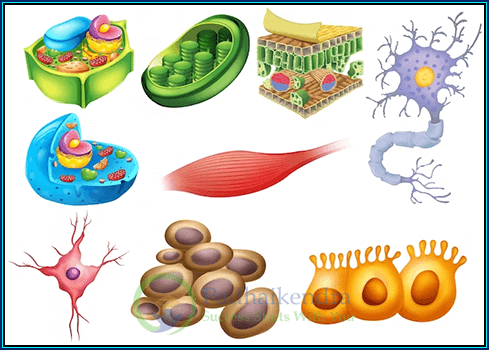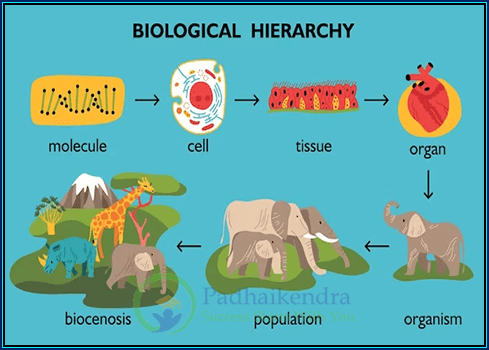Epithelial Tissue
Epithelial tissue is a type of tissue that covers the surfaces of organs, body cavities, and the external surface of the body. It consists of closely packed cells that form a barrier to protect underlying tissues from injury, microbes, and dehydration. Epithelial tissue also plays an important role in absorption, secretion, and sensation. It is classified based on the shape of its cells, which can be squamous, cuboidal, or columnar, and the number of cell layers, which can be simple or stratified. Examples of epithelial tissue include the skin, lining of the digestive tract, and the lining of the lungs.
Characteristics of Epithelial Tissues
Epithelial tissues are a group of tissues that cover the surfaces of the body, line cavities, and form glands. They are characterized by several key features:
- Cellularity: Epithelial tissues are made up of densely packed cells that form continuous sheets.
- Polarity: Epithelial cells have distinct apical and basal surfaces. The apical surface faces the exterior or a lumen, while the basal surface is attached to a basement membrane.
- Attachment: Epithelial cells are attached to a basement membrane, which provides support and helps anchor the tissue to underlying connective tissue.
- Avascularity: Epithelial tissues do not have their own blood supply and rely on diffusion from underlying tissues for oxygen and nutrients.
- Regeneration: Epithelial tissues have a high rate of cell division and can regenerate quickly when damaged.
- Specialized cell junctions: Epithelial cells are held together by specialized cell junctions, including tight junctions, adherens junctions, and desmosomes.
- Specialized surface features: Some epithelial tissues have specialized surface features, such as cilia or microvilli, which help with absorption or movement of substances across the surface of the tissue.
The characteristics of epithelial tissues allow them to function as a protective barrier, regulate the exchange of substances between different compartments of the body, and secrete or absorb substances as needed.

Classification of Epithelial Tissues
| Type of Epithelial Tissue | Shape of Cells | Arrangement of Cells | Examples |
|---|---|---|---|
| Squamous epithelium | Flat and scale-like | Single layer | Lining of blood vessels, lungs, and body cavities |
| Cuboidal epithelium | Cube-shaped | Single layer | Kidney tubules, thyroid gland, and salivary glands |
| Columnar epithelium | Column-shaped | Single layer | Lining of the digestive tract, gallbladder, and uterine tubes |
| Transitional epithelium | Variable, can stretch | Multiple layers | Lining of the bladder, ureters, and urethra |
| Stratified squamous epithelium | Flat and scale-like | Multiple layers | Skin, mouth, esophagus, and vagina |
| Pseudostratified columnar epithelium | Column-shaped | Single layer, appears multi-layered | Lining of the respiratory tract |
Connective Tissue
Connective tissue is a type of tissue in the body that connects, supports, and anchors various organs, tissues, and cells together. It provides strength, elasticity, and structure to the body. Connective tissue comprises a diverse group of cells, fibers, and extracellular matrix. The extracellular matrix is made up of proteins, such as collagen and elastin, and a gel-like substance called ground substance.
Connective tissue has several functions, including:
- Providing structural support: Connective tissue provides a framework for organs and tissues in the body, ensuring that they maintain their shape and remain in place.
- Transporting nutrients and waste products: Blood, a type of connective tissue, carries nutrients, oxygen, and waste products throughout the body.
- Storing energy: Adipose tissue, a type of connective tissue, stores energy in the form of fat.
- Protecting organs: Connective tissue cushions and protects organs, such as the brain and heart.
- Immune response: Connective tissue contains immune cells that fight infections and diseases.
There are several types of connective tissue, including loose connective tissue, dense connective tissue, adipose tissue, cartilage, bone, and blood. Each type has unique properties and functions in the body. For example, bone provides support and protection, while blood carries oxygen and nutrients to cells and removes waste products from the body.
Connective tissue is a vital component of the body that provides structure, support, and protection to organs and tissues.
Classification of Connective Tissues
Connective tissue is classified into five types based on their structural and functional properties:
- Proper Connective Tissue: This type of connective tissue is further divided into two categories – loose and dense. Loose connective tissue is characterized by loosely arranged fibers, while dense connective tissue is characterized by tightly packed fibers. Examples of proper connective tissue include adipose tissue, fibrous tissue, and elastic tissue.
- Cartilage: Cartilage is a type of connective tissue that provides support and shape to the body. It is composed of chondrocytes (cartilage cells) and a matrix of collagen and proteoglycans. Examples of cartilage include hyaline cartilage, fibrocartilage, and elastic cartilage.
- Bone: Bone is a type of connective tissue that provides structural support to the body. It is composed of osteocytes (bone cells) and a matrix of collagen and calcium salts. Examples of bone include compact bone and spongy bone.
- Blood: Blood is a type of connective tissue that is composed of blood cells (red blood cells, white blood cells, and platelets) and a liquid matrix called plasma. It plays an important role in transporting nutrients, oxygen, and waste products throughout the body.
- Lymphoid Tissue: Lymphoid tissue is a type of connective tissue that is part of the immune system. It includes lymph nodes, tonsils, and the spleen, which produce and store immune cells to protect the body from infections and foreign invaders.
Muscle Tissue
Muscle tissue is a type of tissue that is responsible for movement in the body. It is made up of cells called muscle fibers that can contract and relax to produce force and movement. There are three types of muscle tissue: skeletal, smooth, and cardiac.
Skeletal muscle tissue is attached to bones and is responsible for voluntary movements, such as walking, running, and lifting weights. It is striated, meaning it has a striped appearance under a microscope, and is under conscious control.
Smooth muscle tissue is found in the walls of internal organs, such as the stomach and intestines. It is responsible for involuntary movements, such as peristalsis, which helps move food through the digestive system. Smooth muscle tissue is not striated and is not under conscious control.
Cardiac muscle tissue is found in the walls of the heart and is responsible for pumping blood throughout the body. It is striated, like skeletal muscle tissue, but is involuntary and not under conscious control.
The main function of muscle tissue is to produce movement, but it also plays a role in maintaining posture, stabilizing joints, and generating heat. Muscle tissue is highly adaptable and can undergo changes in response to exercise, injury, and disease. Proper nutrition and exercise are essential for maintaining healthy muscle tissue.
Nervous Tissue
Nervous tissue is a specialized type of tissue that is found in the nervous system. It is composed of specialized cells called neurons, which are responsible for transmitting electrical and chemical signals throughout the body. These signals allow for communication between different parts of the body and are crucial for the proper functioning of the nervous system. Nervous tissue is found in the brain, spinal cord, and nerves throughout the body. It plays a vital role in controlling and coordinating many of the body’s functions, including movement, sensation, and perception. Additionally, nervous tissue is responsible for the regulation of many physiological processes, such as heart rate, breathing, and digestion.





